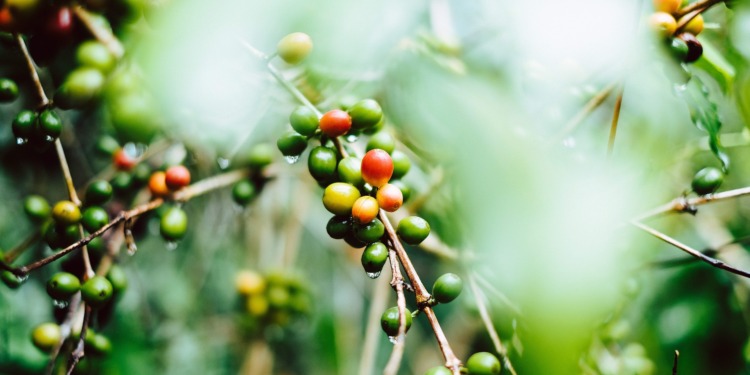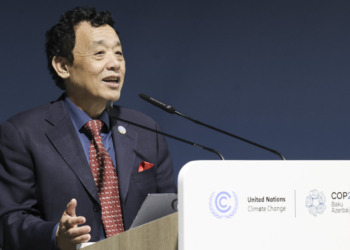If you find satisfaction in saving that little bit of surplus salad dressing, giving new life to last night’s leftovers or proudly buying the unwanted, misshapen produce over their perfect equivalents; if you haven’t already, then you should try “upcycled food.”
As the global conscience on sustainability has bloomed over the past few years, what started as a trend underpinned by traditional values – we’re all familiar with the “waste not, want not” proverb – has now transformed into a booming market. The upcycled food industry was valued at $46.7 billion in 2019 and is estimated to reach just over $55 billion in 2023, with a whole range of “upcycled food” products popping up in supermarkets.
But what is upcycled food? In simple terms, it’s food products made from surplus ingredients that would have otherwise ended up as food waste.
Take the plunge and you’ll soon realise that upcycled foods not only taste good, but they’re also highly nutritious and low-impact so they’re good for both your health and the planet.
Creating value from vegetable pulp
In 2020, a task force of experts provided an official definition of upcycled food for industry, governments and academia:
“Upcycled foods use ingredients that otherwise would not have gone to human consumption, are procured and produced using verifiable supply chains, and have a positive impact on the environment.”
The Upcycled Food Association (UFA) explains that:
“Upcycled food is about reducing food waste, by creating high quality, nutritious food products out of the nutrients that slip through the cracks of our food system.”
What we’re talking about here, is the spent grains from beer brewing; the vegetable pulp leftover from making juices; the rest of the cacao fruit which doesn’t go into chocolate production; or the “ugly” fruit and veg that aren’t good enough to sell, and much more.
Upcycling provides imperfect, surplus and by-product ingredients – that would otherwise have been discarded – with a new life as a nutritious and value-added product that helps build sustainable and resilient global food systems.
To give you an idea of just some of the upcycled products currently available:
- The Coffee Fruit Bars from I Am Grounded are caffeinated energy bars made from the natural coffee fruit byproduct from coffee production, also known as “coffee cherries.”
- Noons (Whole Cacao Crunch Bites) from Candid are “afternoon delight” treats made using the entire cacao pod rather than letting the fruit pulp go to waste (as often happens in chocolate production).
- Chicken Skin Chips from Flock Foods are high-protein, low-carb snacks made from chicken skins that would otherwise have been discarded.
- Pulp Chips from Pulp Pantry are grain-free vegetable chips made from the leftover fresh vegetable pulp from making cold-pressed juices.
- Chia Smash from Oswald is a “superfood jam” made using “imperfect” fruits that may be broken, misshapen, slightly off-colour or the wrong size.
- Cacao Water, Whole Cacao Granola and other bars and snacks from Blue Stripes Urban Cacao are all made using upcycled whole cacao fruit (including shell, fruit and beans).
- Spare Tonic from The Spare Food Co. is a probiotic sparkling tonic made using whey byproduct from yoghurt production. Spare Tonic is also on tap at Google’s west side Manhattan office!
- The puffed snacks, pasta, baking mixes and bars from ReGrained are all made from the company’s own ingredient called SuperGrain+® which they make using the grains from beer brewing. The company has also developed compostable packaging in partnership with OSC2 Packaging Collaborative.
Why upcycling food is so important
At present, from harvest to consumption, approximately 30% of the world’s food goes to waste. This has a spectrum of negative economic, social and environmental impacts; not only is valuable time, effort, money, resources and energy lost in production, but the food waste that goes into landfill is a potent source of greenhouse gases (GHGs).
The United Nations (UN) states that food waste in landfill emits 8-10% of global GHGs, and according to a new study published in Nature Food on March 13, around half of the entire global food system’s emissions come from food loss and waste.
Related Articles: Food Banks: An Unsung Hero of Climate Action | Global Report on Food Crises: Number of People Facing Acute Food Insecurity Rose to 258 Million in 2022 | Meat, Eggs and Milk Essential Source of Nutrients Especially for Most Vulnerable Groups, New FAO Report Says | From Waste to Plate: Can We Make Food From Plastic?
What’s more, according to Eurostat, a total of 131kg of food was wasted per inhabitant in the EU in 2020. Meanwhile, the UN says that more than 30% of the global population was “moderately or severely food-insecure, lacking regular access to adequate food” that same year.
It’s clear that our global society must change the way in which it produces and consumes food.
As is outlined in the UN’s Sustainable Development Goal 12 (SDG 12): “Unsustainable patterns of consumption and production are root causes of the triple planetary crises of climate change, biodiversity loss and pollution.”
“Governments and all citizens should work together to improve resource efficiency, reduce waste and pollution, and shape a new circular economy,” writes the UN.
No more wasted opportunities
Embracing the upcycling of food is not only essential for combating global food waste, but it can also present opportunities to businesses in the food industry as both the perspective and policy landscapes related to sustainability continue to evolve.
For example, as was stated in a recent article by The Food Institute titled “Food Waste: Investment in Upcycled Food Gaining Steam:”
“In addition to helping address the world’s sizable food waste issue, the Upcycled Food Association (UFA) sees ample opportunity for the trend to create economic value for companies.”
However, like with any sustainability-related trend, as the upcycled food wave surges, an all too familiar concern resurfaces once again: Greenwashing.
To help combat this, in 2021 the UFA launched the Upcycled Certified™ label to provide consumers with upcycled product verification and transparency. The UFA states:
“The certification is designed to be rigorous to receive the certification, products must meet strict standards for ingredient sourcing, processing, and labeling. Additionally, the certification requires transparency and traceability throughout the supply chain, which can help to prevent greenwashing.”
Circular food economy
If each of us had to actually travel to the landfill to dump our own personal or business food scraps onto the pile with everyone else’s – perhaps less would be unnecessarily wasted.
In reality, there seems to be a disconnect between everyday life and the urgency with which we must all cut overconsumption to curb emissions and environmental impact.
However, if individuals and industry can together work to incorporate more upcycled food into shopping lists and supply chains – though not a cure-all – we’ll be a significant step closer to improving the way we produce and consume food as a planet.
Editor’s Note: The opinions expressed here by the authors are their own, not those of Impakter.com. In the Featured Photo: Coffee plant with coffee fruit. Featured Photo Credit: Gerson Cifuentes










